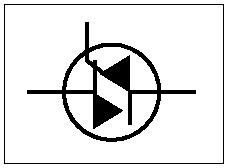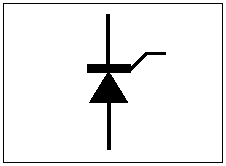Diac
 |
A diac is a form of solid-state switch used to switch AC voltage; it belongs to the class of switches known as thyristers. It is like a junction transistor without a base lead (it is a two-lead device) and accomplishes its switching action by breakdown at a certain voltage. There are also four layer devices with a similar mode of operation known as four-layer diodes. |
Electronics concepts
Diode varieties
| HyperPhysics*****Electricity and magnetism | R Nave |



